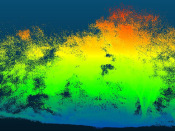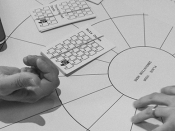Por Grégoire Allaire (CMAP, École Polytechnique).
Additive manufacturing (or 3-d printing) is a new exciting way of building structures without any restriction on their topologies. However, it comes with its own difficulties or new issues. Therefore, it is a source of many interesting new problems for optimization. I shall discuss two of them and propose solutions to these problems, but there is still a lot of room for improvement!
First, additive manufacturing technologies are able to build finely graded microstructures (called lattice materials). Their optimization is therefore an important issue but also an opportunity for the resurrection of the homogenization method ! Indeed, homogenization is the right technique to deal with microstructured materials where anisotropy plays a key role, a feature which is absent from more popular methods, like SIMP. I will describe recent work on the topology optimization of these lattice materials, based on a combination of homogenization theory and geometrical methods for the overall deformation of the lattice grid.
Second, additive manufacturing, especially in its powder bed fusion technique, is a very slow process because a laser beam must travel along a trajectory, which covers the entire structure, to melt the powder. Therefore, the optimization of the laser path is an important issue. Not only do we propose an optimization strategy for the laser path, but we couple it with the usual shape and topology optimization of the structure. Numerical results show that these two optimizations are tightly coupled.
This is a joint work with many colleagues, including two former PhD students, P. Geoffroy-Donders and M. Boissier.
Zoom | Password: lisbonwade
The Lisbon Webinar in Analysis in Differential Equations is a joint iniciative of CAMGSD, CMAFcIO and GFM, three research centers of the University of Lisbon. It is aimed at filling the absence of face-to-face seminars and wishes to be a meeting point of mathematicians working in the field.













